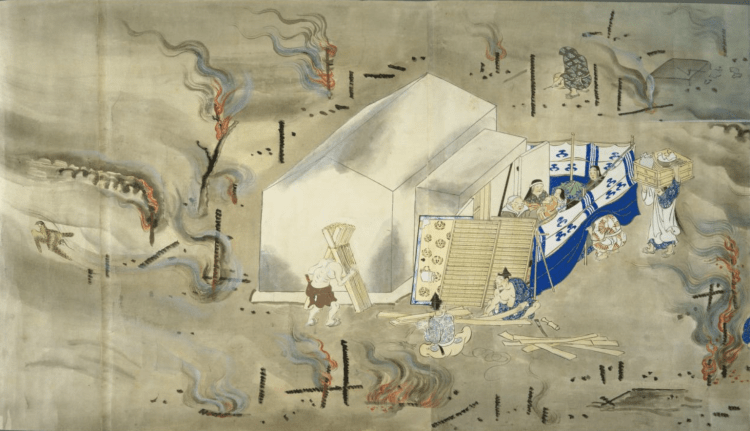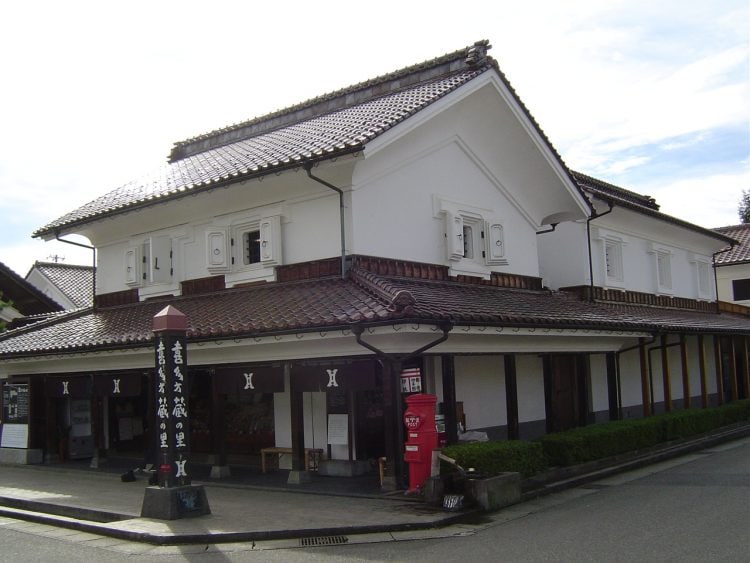Life in an old Japanese house Vol.10: Japanese House’s wall pt.2
Japanese Houses are often thought of as being drafty, but the air ventilation is there by design. Dirt walls themselves are rather airtight like that of a storehouse or cellar.
In the time when plasterboard and concrete were not available, dirt walls were an essential fire preventative and fireproofing measure. In areas densely packed with buildings, fire prevention was crucial. This is why airtight storehouses with fully covered dirt walls were commonly built to protect property. Professional plasters added step-like bevels around doors and windows to almost entirely eliminate gaps in order to improve airproofing and further ensure fireproofing of storehouses.
Traditional storehouses see little practical application nowadays and thus are steadily being torn down. However, storehouses with their thickly coated dirt walls are not only airtight, but also soundproofed and well insulated and can be repurposed into a variety of applications.

This picture scroll depicts a storehouse surviving a fire. From Kasuga Gongen Kenki (Picture from the National Diet Library Digital Collection)

A storehouse with windows featuring step-like bevels (wikipedia)
In Japanese architecture the word ‘Ookabe’ refers to walls with no exposed pillars like those found in a storehouse. ‘Shinkabe’ refers to walls with exposed pillars. Most dirt walls found in homes have exposed pillars. When the dirt walls dry and contract over time, the point where the wall and pillar join known as ‘Chiri’ will slowly form gaps making a wall drafty. There is a technique of putting plaster or new dirt into a groove to help prevent gaps from forming, but since it’s rather a difficult process there are many old homes that have gaps between their pillars and walls.
Dirt walls have little water resistance and will collapse from exposure to the rain. Therefore it is commonplace to coat them with plaster or other water-resistant materials, but without routine upkeep it will peel off. In place of that, more homes are having their exterior walls fully coated with mortar on a metal lath to make them an ‘Ookabe’ which increases durability, as well as waterproofing and fireproofing them. This seemingly overall improves the home since homes with ‘Shinkabe’ inside and mortar coated ‘Ookabe’ outside even if gaps form between the pillars and walls, the home will not become drafty plus will have greater fire and water resistance. That said, pillars coated with mortar have poor breathability and if left unpainted easily absorb moisture, which adversely means in humid weather mold and termite damage are much more likely to occur.

Here is an example of a ‘Shinkabe’ finished with mortar on the first floor and an ‘Ookabe’ on the second floor.
In recent years, where toxic substances including formaldehyde are avoided for their environmental and health risks, and an emphasis is placed on using natural materials, people are looking to dirt walls once more for their superior deodorization and moisture absorption. In order to solve the matter of earthquake resistance, construction time and cost, a rough wall panel has been developed to utilize the efficiency of dirt walls while improving strength and making application easier.
Despite the health benefits of this type of dirt wall, if you are lax on maintenance then the dirt will crumble and fall. Also depending on how the maintenance is carried out, the advantages of having dirt walls can be lost.
One example is if a resin based sealer is used to coat the surface of a dirt wall before painting, depending on the paint used the dirt wall can lose its effectiveness in controlling humidity. There are appropriate sealers and paints which will not affect the effectiveness of a dirt wall’s humidity control so it is best to look for and purchase them when doing work on walls.
There is a paint made with diatomaceous earth that has recently become popular which is said to be good for controlling humidity. This paint when applied to wood would have just a small effect but is perfectly suited to being used on dirt walls.
Plaster is the most common way to finish dirt walls but at one time long ago, it seems that many walls were left unfinished during the intermediate coat because it became financially difficult to finish the project. However, after the advancements with the creation of Sen no Rikyu’s ‘Souanfu’ tea house, various new plastering methods were developed to better utilize the benefits of dirt walls. Some well known examples are the ‘Jyuraku’ wall from Kyoto using ‘Jyuraku’ dirt, The ‘Ootsu’ wall composed of lime, colored clay, and finely cut straw which is polished to a luster with a trowel, and ‘Sabi’ wall which is dirt mixed with iron powder that infuses a rust color into the wall.
What initially was only available in white, plaster is now mixed with rouge, pigment and ink to produce a variety of colors. One side note, plaster available in the West is made of different materials. Whereas Western plaster is lime mixed with a large quantity of sand, Japanese plaster is composed of a paste made of seaweed. Slaked lime and a little sand is added to the paste to make Japanese plaster. Because of these differences, professionals here divide Western and Japanese plaster into two different categories.
Also nowadays, many common types of walls including sand walls, cotton walls, and fiber walls are called this since sand and cotton are mixed into the starch paste during plastering. The ease of application, humidity control, and wide distribution from the beginning made this a popular building material and one often seen in many old homes. When plaster is at the end of its lifespan it will begin to peel and fall off which to modern eyes may make it seem annoying, but spray a little water and it should come right off. After that it should be easy to replaster.

 English
English 日本語
日本語

